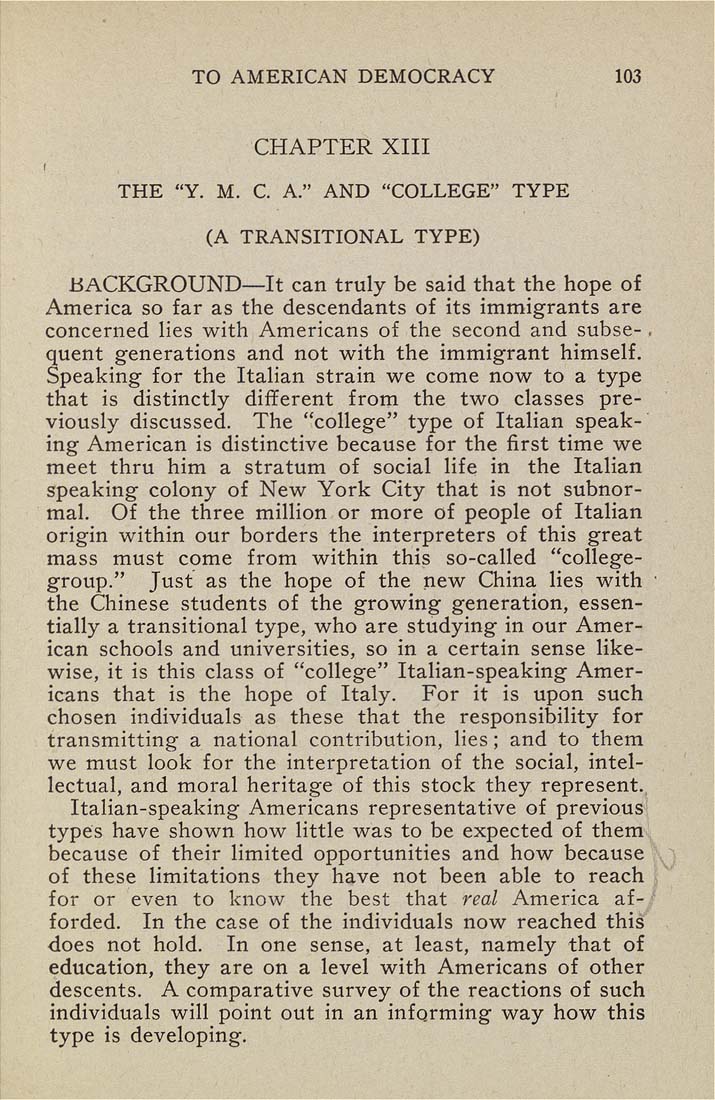TO AMERICAN DEMOCRACY 103
CHAPTER XIII
"THE "Y. M. C. A." AND "COLLEGE" TYPE
(A TRANSITIONAL TYPE)
BACKGROUND—It can truly be said that the hope of
America so far as the descendants of its immigrants are
concerned lies with Americans of the second and subse¬
quent generations and not with the immigrant himself.
Speaking for the Italian strain we come now to a type
that is distinctly different from the two classes pre¬
viously discussed. The "college" type of Italian speak¬
ing American is distinctive because for the first time we
meet thru him a stratum of social life in the Italian
speaking colony of New York City that is not subnor¬
mal. Of the tliree million or more of people of Italian
origin within our borders the interpreters of this great
mass must come from within this so-called "college-
group." Just as the hope of the new China lies with
the Chinese students of the growing generation, essen¬
tially a transitional type, who are studying in our Amer¬
ican schools and universities, so in a certain sense like¬
wise, it is this class of "college" Italian-speaking Amer¬
icans that is the hope of Italy. For it is upon such
chosen individuals as these that the responsibility for
transmitting a national contribution, lies; and to them
we must look for the interpretation of the social, intel¬
lectual, and moral heritage of this stock they represent.^
Italian-speaking Americans representative of previous
types have shown how little was to be expected of them
because of their limited opportunities and how because
of these limitations they have not been able to reach
for or even to know the best that real America af¬
forded. In the case of the individuals now reached this
does not hold. In one sense, at least, namely that of
education, they are on a level with Americans of other
descents. A comparative survey of the reactions of such
individuals will point out in an informing way how this
type is developing.
|








